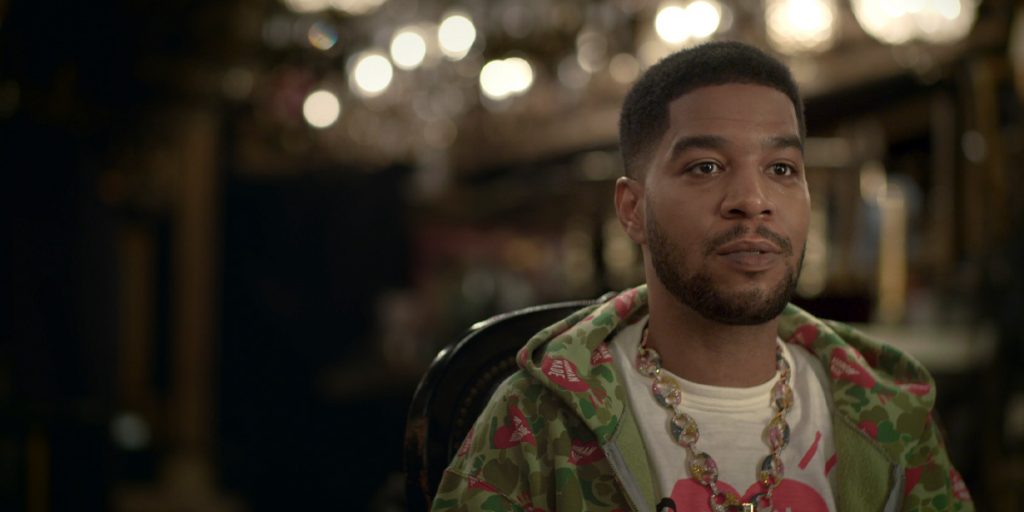Robert Alexander’s A Man Named Scott is a visually stylistic, creative and personal documentary that charts the influential career of Kid Cudi.
Over a decade since the release of his debut studio album “Man on the Moon: The End of Day,” Kid Cudi – also known as Scott Mescudi – is one of the most influential people in the alternative hip-hop sphere. His blending of genres, use of melody and willingness to be vulnerable in his lyrics has amassed legions of devoted fans and inspired a generation of artists to be fearless in their creativity. Robert Alexander’s A Man Named Scott charts Cudi’s career over the last decade, from the successful, creative highs to the darkest, personal lows. It’s an in-depth look at the man behind Man on the Moon; a stylised vision of a truly creative artist.
The documentary is part compilation of talking head interviews and archival footage from the recording studio, part concert footage, part visual art piece with creative dance and movement performances representing some of the film’s thematic elements. It’s highly stylised and visually interesting, and reflects the importance Cudi places on his individuality, his creativity and his freedom of expression, particularly in regards to his emotions. With contribution from producers like Pharrell Williams, Dot Da Genius, Plain Patt and Emile Hayne, record executive Sylvia Rhone and psychologist Dr. Candice Norcott, as well as from stars like Kanye West, Willow and Jaden Smith, Shia Labeouf, A$AP Rocky and Timothée Chalamet, it covers Kid Cudi the artist as well as Cudi the man.
Cudi has been writing poetry since the age of 11, and his music acts as an extension of his self. He pours his vulnerabilities into his lyrics and that willingness to expose his feelings marked something of a change in 2007, when his single “Day N Nite” was released on MySpace. Hip-hop had readily bragged about wealth, status and sex, and gotten serious about the external environments artists were growing up in, but there was somewhat of a detachment from genuine emotion. Cudi was part of the change. He helped inspire the ‘internet generation’ to allow themselves the ability to talk freely about their sadness and joy, their dreams and fears. His music focused on the internal, and it really resonated with audiences and artists alike.

The first hour of the documentary follows the making of the “Man on the Moon: The End of Day” album, almost track-by-track. Alexander goes to great lengths to emphasise how much Cudi had no boundaries and was willing to experiment and create something new and unique, something that was truly his. Collaborators talk about their excitement, Cudi’s disregard for the perception of others, and of the wealth of influences – N.W.A and Public Enemy, Jimi Hendrix and David Bowie, John Mayer and Coldplay – that shaped his individual sound. And it paid off: the album was critically acclaimed, a fan success and saw Cudi achieve his musical dream.
But then the documentary shifts, and focuses more on Cudi’s personal struggles. He suffered from depression and suicidal thoughts, relied on drugs and alcohol to be ‘normal’, and buckled under the pressure of expectation, under the weight of wondering why people valued him. His work was such an extension of himself that he chafed at being so vulnerable. People asked personal questions that he found very invasive. It’s perfectly encapsulated by Labeouf, who describes Cudi as someone who is “so aware of how he wants to shape [people’s perceptions of him] to such a degree that it doesn’t allow him to be free”.
Cudi himself is somewhat guarded, never really divulging just how bad things got for him personally – mentally – and instead emphasises how checking himself into rehab saved his life; how his pain has always been evident in his music. Alexander juggles the balance of artist and man in a way that highlights that with Cudi, and the host of up-and-coming artists he has inspired, there’s not much of a difference. In one instance, near the beginning of the film, Alexander includes a snippet from a phone conversation with Cudi in which he makes a note on how the film should visualise a particular moment. Plain text on a black background, no frills, just the words: ‘In 2008, Kid Cudi quit his last retail job he ever had’, to emphasise the risk and creative importance his first tour to Australia had. It shows the role Cudi had on shaping this documentary, much like his albums, into something that truly conveys his authenticity.
A Man Named Scott is a really personal, visually arresting and interesting documentary that values creativity. It’s a filmic portrait of an artist that created something truly influential, and has continued to carve pieces of himself into musical albums that have truly impacted and connected with people. It ends on a note of optimism, in that Cudi has no intention of making such dark records again. But makes it clear that there’s still a wealth of creativity to mine from in the pursuit of happiness.
Prime Video released A Man Named Scott globally on November 5, 2021.

